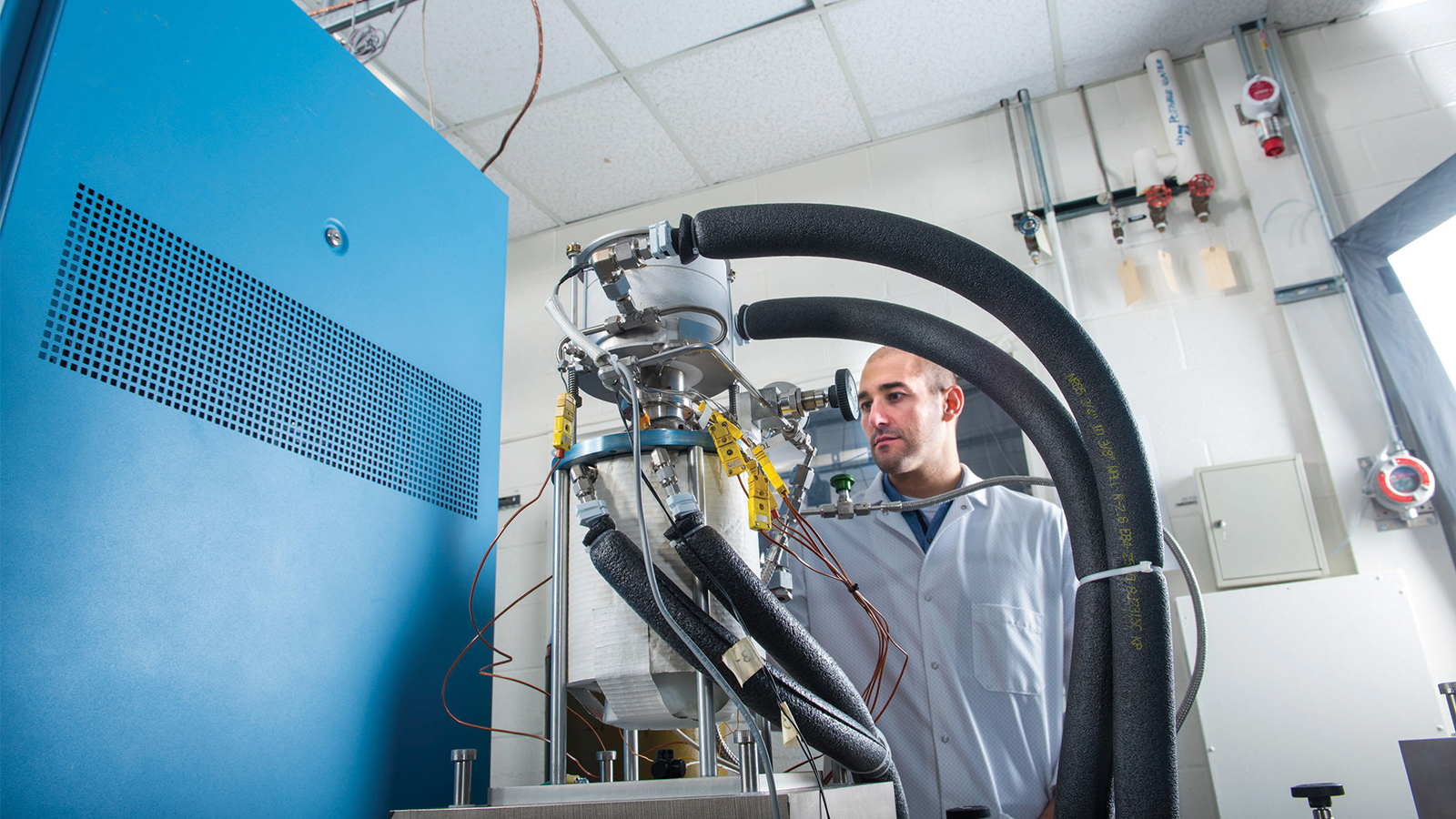Stay Up to Date
Submit your email address to receive the latest industry and Aerospace America news.
The Aerospace Power Systems Technical Committee focuses on the analysis, design, test or application of electric power systems or elements of electric power systems for aerospace use.
NASA’s Parker Solar Probe launched in August and will get as close as 6.16 million kilometers to the sun, into the sun’s corona, seven times closer than any other mission. The solar intensity at one point will be 475 times the intensity experienced in Earth orbit. The solar-powered probe uses a carbon-composite heat shield to protect the spacecraft and will contract and extend its solar array wings — which can provide 388 watts at its closest approach — in addition to using active cooling to maintain the arrays at proper operating conditions. The Johns Hopkins Applied Physics Laboratory designed and controls the spacecraft.
The InSight mission to study Mars’ interior was launched in May and was scheduled to land in late November. During the cruise phase, the InSight lander is inside a protective aeroshell, which is attached to the cruise stage with its own solar arrays producing approximately 1 kilowatt on Earth and 320 W in Mars orbit at 1.4 astronomical unit. After its approach to Mars, the spacecraft lander will separate from the aeroshell to land. The lander will deploy its own solar arrays on the surface and begin the science phase of the mission, designed to last for approximately two years. InSight is a collaboration between NASA’s Jet Propulsion Laboratory and a number of European partners providing the science instruments.
OSIRIS-Rex is scheduled to arrive at the asteroid Bennu in December and start the survey of the asteroid prior to acquiring samples. The spacecraft is powered by two solar panels, each with two-axis tracking, producing 2.7 kW on Earth and 1.2 kW at 1.3 AU during the science phase.
Lockheed Martin’s A2100TR satellite bus with 25 kW multimission flexible deployable solar arrays is scheduled to launch in December on Arabsat-6A. It will be the first commercial geosynchronous Earth orbit communications satellite with deployable flexible arrays designed for 15 years of on-orbit operation. The solar arrays deploy into a large surface area for generating power while stowing within smaller stowage volume during launch, as compared with arrays using heritage deployable rigid panels.
Two Multi-Mission Radioisotope Thermoelectric Generators, or RTGs, were delivered to the U.S. Department of Energy’s Idaho National Laboratory this year for integration with eight General Purpose Heat Source modules in 2019. Some newly produced plutonium-238 is contained within the modules. It is slated for launch on the Mars 2020 Rover. Also this year, NASA’s Next-Generation RTG project was initiated to develop a 400-500 watts electric vacuum-based RTG for use in deep-space missions. This next-generation system seeks to provide performance better than that of the Cassini radioisotope power system.
NASA set a run-time record this year for the operation of a flexure-based free-piston Stirling engine at full power. The experimental unit has performed 110,000 hours (12.5 years) of cumulative operation since 2003, making it the longest-running heat engine in history. Timelines for missions to the outer solar system have durations as long as 17 years, and NASA engineers believe this Stirling design has the potential to meet these life requirements.
NASA’s Kilopower project completed nuclear-heated reactor prototype ground tests this year and is being considered for a possible flight technology demonstration mission in the mid-2020s. The ground test was conducted at the Department of Energy’s Nevada National Security Site’s National Critical Experiment Research Center and is the first test of a U.S. space nuclear power system in over 50 years. The test system was sized for 1 kWatt electric output and featured a 4 kWatt thermal uranium-molybdenum reactor core, sodium heat pipes for heat transfer, and Stirling power convertors developed during the Advanced Stirling Radioisotope Generator program.
Contributors: Steven Geng and Giang Lam
Photo: This experimental Stirling engine has operated at full power for nearly 13 years at NASA’s Glenn Research Center in Ohio. Credit: NASA
Stay Up to Date
Submit your email address to receive the latest industry and Aerospace America news.




